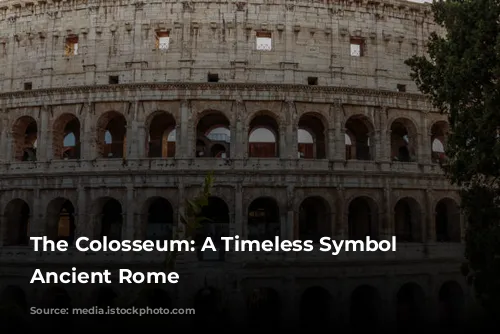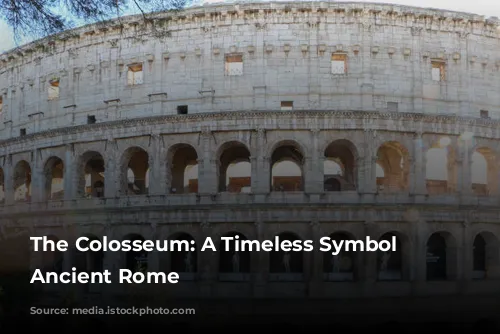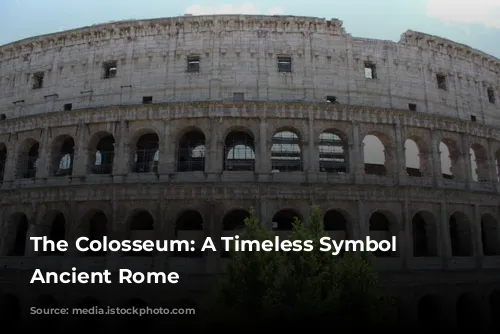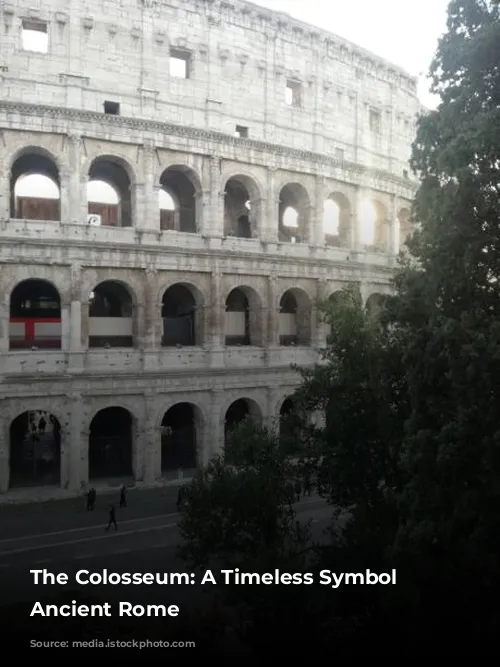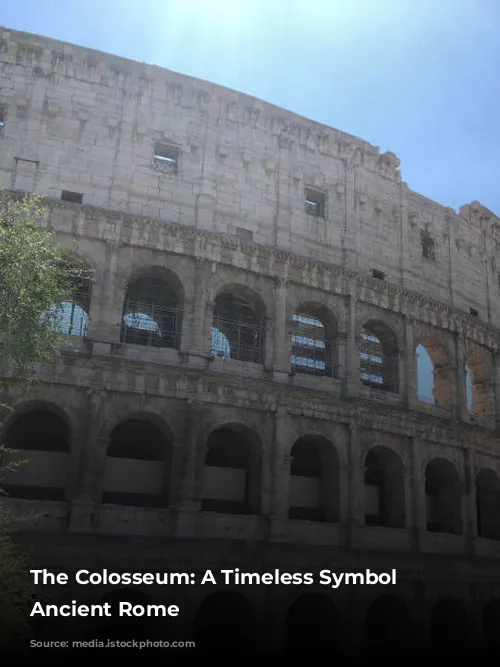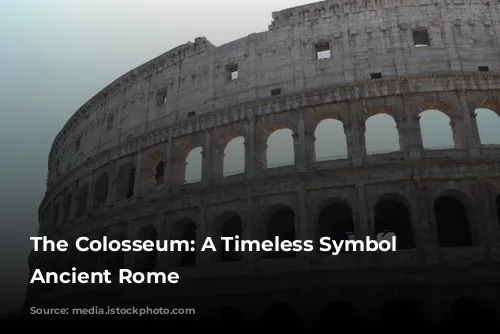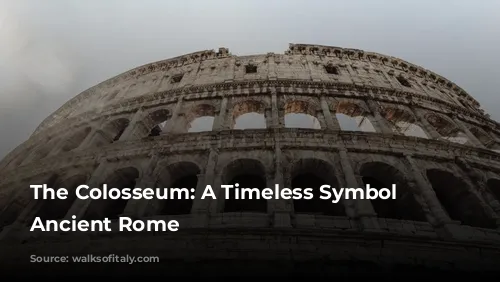The Colosseum, also known as the Flavian Amphitheater, stands as a powerful testament to the grandeur of ancient Rome. This architectural marvel, constructed by the Flavian dynasty, namely Emperors Vespasian, Titus, and Domitian, took over 25 years to complete in the first century AD. It remains the largest amphitheater ever built, a testament to the Romans’ engineering prowess. While its purpose was grand entertainment, it’s astounding how similar these ancient spectacles were to our modern-day events.
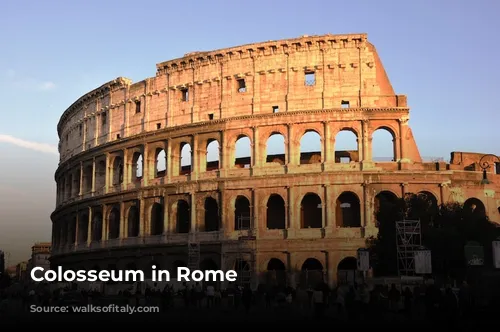
A Glimpse into the Past: The Colosseum’s Architecture and Design
The Colosseum was an architectural feat for its time. It could hold a staggering 50,000 to 80,000 spectators, making it comparable in size to modern-day stadiums like Denver’s Mile High Stadium or Manchester United’s Old Trafford.
This massive venue was built with a focus on efficiency and crowd control. Ingeniously designed exits allowed the entire stadium to be emptied within minutes, ensuring a smooth flow of spectators. The arena floor featured trapdoors that allowed for elaborate “special effects,” adding to the spectacle of the shows. A giant awning protected the audience from the elements, ensuring their comfort during the performances. Visiting the Colosseum today provides a fascinating glimpse into the lives of the ancient Romans and their love for grand entertainment.
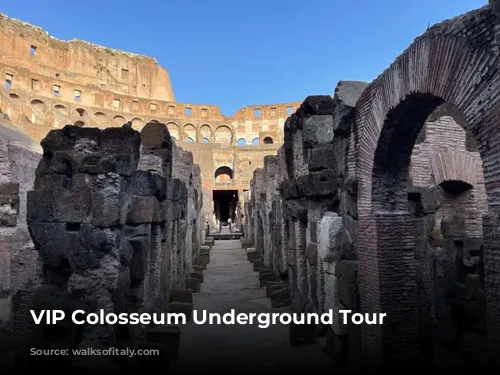
Exploring the Colosseum: Unveiling Its Secrets
The Colosseum’s Facade:
The Colosseum’s outer wall is a marvel of engineering, constructed from over 100,000 cubic meters of travertine stone without the use of concrete. The stones were held together by 300 tons of iron clamps. Sadly, these clamps were plundered throughout history, leaving the Colosseum with only its impressive stone structure. The structure boasts 80 entrances and exits, allowing for swift crowd movement. The grandest arches were reserved for the Roman elite, while the majority of the audience entered and exited through passages known as “vomitoria” (Latin for “rapid discharge”). Interestingly, this term gave rise to the English word “vomit.”
Unveiling the Colosseum Underground:
Stepping onto the Colosseum’s floor, one will notice the absence of the original wooden floor, which was probably covered in sand. Instead, a network of cells and tunnels, known as the hypogeum or “Colosseum underground,” is revealed. This underground space housed the gladiators before their battles, along with wild animals imported from far-off places like North Africa. These animals were kept captive in the hypogeum before being released during the shows known as “venationes,” where gladiators hunted them for the crowd’s entertainment.
Secrets of the Arena Floor:
Look closely, and you will notice areas that housed trapdoors, used to raise and lower the arena floor for dramatic effects. While the exact nature of these effects has been lost to history, they played a significant role in the captivating performances that took place within the Colosseum.
The Colosseum’s Name: A Legacy of a Lost Colossus:
The name “Colosseum” actually originates from a colossal bronze statue of Emperor Nero that stood in front of the amphitheater, known as the Colossus. The statue, which stood approximately 30 to 35 meters tall and was so large that it required elephants to move it, eventually met its demise and was melted down for its metal. Despite never being within the Colosseum itself, the Colossus’s presence nearby gave the amphitheater its enduring name. This colossal statue inspired the phrase “As long as the Colossus stands, Rome will stand; when it falls, Rome will fall, too,” which reflects the deep connection between Rome’s fate and the magnificent Colossus.
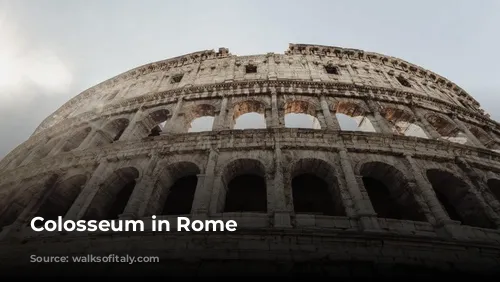
Visiting the Colosseum: Essential Information and Tips
Colosseum Opening Hours and Closure:
The Colosseum is open daily from September 1st to 30th, from 9:30 AM to 7:00 PM, with last admission one hour before closing time. For more details and ticket purchase, visit the Coop Culture, the official ticket office. The Colosseum is closed on December 25th and January 1st.
Bag Policy and Security:
The Colosseum permits small bags and medium-sized backpacks. However, luggage, large backpacks, and bulky bags are strictly prohibited. Security checks are conducted at the entrance, so be prepared to open your bags for inspection. To avoid delays, arrive at least 30 minutes before your reservation time.
Accessibility:
The Colosseum has limited elevator access. Visitors in wheelchairs should be aware that their visit will likely be restricted to the ground floor of the amphitheater.
Enhancing Your Colosseum Experience:
The Colosseum lacks extensive signage and information. To fully appreciate its grandeur, we recommend researching beforehand, renting an audio guide, or joining a guided tour. Our VIP Colosseum Underground Tour or Premium Colosseum Tour provide expert insights into the Colosseum’s history and the lives of the gladiators. These tours also include visits to the Roman Forum and Palatine Hill.
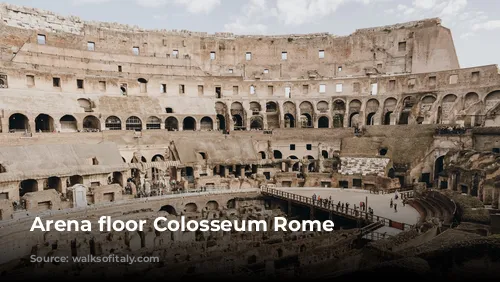
Ticket Options for the Colosseum: Choose the Right One for You
Purchasing Tickets:
Tickets for the Colosseum can be purchased online or via the call center at Coop Culture, the official ticket office.
Roma Pass: A Convenient Option:
Alternatively, consider purchasing a Roma Pass. This card grants access to many of Rome’s most popular attractions, including the Colosseum, and is a popular choice for history and archeology enthusiasts.
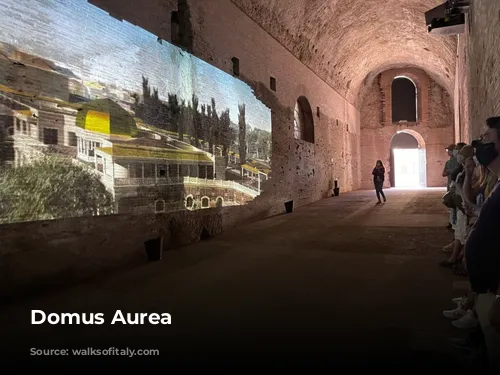
Finding the Best Time to Visit the Colosseum: Avoiding Crowds and Weather Woes
Off-Season: November to April:
The off-season, from November to April, is generally less crowded, making it ideal for a tranquil visit. However, be prepared for potential storms. While regular rain won’t shut down the Colosseum, inclement weather can result in closures due to its outdoor nature.
High Season: May to October:
Expect larger crowds and generally good weather during the high season (May to October). Booking tickets in advance is highly recommended during these months.
Enjoy your visit to the Colosseum, a timeless symbol of ancient Rome’s power and splendor!


